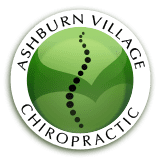Frequently Asked Questions
We look forward to being your family’s solution to a better, healthier life! We hope you’ll choose Dr. Solomon to be your chiropractor of choice in the Ashburn, Virginia area.
What is Chiropractic?
Origins
The “founding father” of chiropractic, Dr. D.D. Palmer, developed a theory that spinal misalignment caused nerve pressure or irritation which in turn caused various ailments. He realized that the structure and condition of the body influenced how the body functioned and its ability to heal itself, without the use of drugs or surgery. This simple philosophy has healed people and has prevented unwanted injury and illness for over a century! But to fully understand the chiropractic perspective, one must learn a bit about the nervous system, or how our bodies are “wired.”
Our wiring
The nervous system consists of the brain, spinal cord, and nerves. The brain is divided into sections and stores and receives an incredible amount of information. But this information needs a way to get in and out. Nerves provide a pathway for this information to travel, and the spinal cord is made up of bundles of these nerves. The spine both houses and protects the spinal cord. Nerve dysfunction can result from any number of factors, such as falls, accidents, stress, tension, or over-use. These events can alter our “wiring” and create pain or discomfort in our bodies.
Getting to the source
Doctors of chiropractic are trained to locate the source of the pain or discomfort— it may actually be far from the actual location where the symptom is occurring— and then we correct or adjust the joints in the body and set it up to heal on its own. Of course, the type of correction or adjustment employed by the chiropractor depends on the condition being treated, but you get the main idea. The important thing to remember is that chiropractic success occurs by addressing the source of the problem, not just masking the symptoms.
Holistic efficiency
Because helping the body heal itself involves many facets, chiropractors also provide lifestyle advice to help prevent illness and injury. Diet & nutrition, fitness, ergonomics, and other areas in your life contribute, or diminish, your overall health. By making the right choices, one can live a life full of wellness and vitality.
Does Chiropractic work?
A common interference to the nervous system is the 24 moving bones of the spinal column. A loss of normal motion or position of these bones can irritate or impair the function of the nervous system. This can disrupt the transmission of controlling nerve impulses. With improved spinal function there is often improved nervous system function. Your chiropractic doctor can help remove interferences that may be impairing normal health. Since the primary focus of your care is improved nervous system function, chiropractic can have a positive effect on many health conditions not normally though of as “back” problems.
How Does It Work?
We look at the whole picture.
Like other health-care providers, we follow a standard routine to gain information about the patient. We consult, review the case history, conduct a physical examination, and we may request laboratory analyses and/or x-rays.
Unlike other health-care providers, however, chiropractic physicians also conduct a careful analysis of the patient’s structure and pay particular attention to the spine. We also ask you about your life— Do you eat well? Exercise at all? How do you deal with stress? Do you have children? What do you do for work? And so on.
We seek the origin of the problem.
Using this information, a diagnosis is made. Included in the diagnosis is the probable reason for your pain or discomfort. It is important to note that chiropractors seek the origin of the illness in order to eliminate it–we do not simply treat the symptoms. If your roof is leaking, do you simply catch the drips in a bucket for years on end, or do you repair the roof to prevent it from leaking?
Similarly, if the migraine headache you’ve had all week is being caused by misaligned vertebra and an irritated nerve, do you continue to take pain killers indefinitely, or do you realign the vertebra to prevent the pain? You get the picture.
Does the Research Support Chiropractic?
For Acute Low-Back Problems:
A report published in 1994 by the Agency for Health Care Policy and Research on acute low-back pain concluded that spinal adjustment is one of the most effective treatments for this condition. In another study published in 1994 by the University of Pittsburgh Medical Center and the Jefferson County (Missouri) Rehabilitation Center, it was concluded that greater and more rapid improvement occurred when treated using exercises and spinal adjustment for acute low-back pain. A third study conducted by the Los Angeles College of Chiropractic and the University of Vermont was published in 1992. These researchers reported that spinal adjustment, when compared to other methods of treatment for acute lower-back pain (massage, corset, and TMS), proved to be a “superior,” more effective treatment after three weeks of care.
For Long-Term Low-Back Problems:
In 1997, the Dutch Health Insurance Board funded an investigation that summarized the results of 48 separate studies on the effectiveness of chiropractic treatment for chronic lower-back pain. The investigation determined that spinal adjustment is more effective than treatments suggested by general practitioners (bed rest, analgesics, and massage).
“…improvement in all patients at three years was about 29% more in those treated by chiropractors than in those treated by the hospitals. The beneficial effect of chiropractic on pain was particularly clear.” – British Medical Journal, Meade et al. (1995)
For Pain:
” …patients suffering from back and/or neck complaints experience chiropractic care as an effective means of resolving or ameliorating pain and functional impairments, thus reinforcing previous results showing the benefits of chiropractic treatment for back and neck pain.” – Journal of Manipulative and Physiological Therapeutics, Verhoef et al. (1997)
“…for the management of low-back pain, chiropractic care is the most effective treatment, and it should be fully integrated into the government’s health care system.” – The Manga Report (1993)
Neck Pain:
The efficacy of chiropractic for neck pain has been well documented in numerous studies conducted in the United States, Canada, Wales, and the Netherlands. In a joint U.S./Canadian study published in 1996, researchers from UCLA, the West LA Veterans Affairs Medical Center, and two chiropractic colleges found that for some patients with sub-acute or chronic neck pain, spinal adjustment proved to be a more effective treatment than mobilization or physical therapy. In a study conducted by the Canadian Memorial Chiropractic College in Toronto in 1997, researchers found spinal adjustments to improve neck mobility and decrease neck pain. An additional Canadian investigation published in 1997 by the University of Calgary found spinal adjustments to improve neck mobility and decrease neck pain in patients having back and/or neck complaints.
A 1992 Netherlands study conducted by doctors of medicine and other professionals investigated different methods of treatment for patients with chronic back and neck pain. After 12 weeks of care, manual therapy (which consisted of adjustment and mobilization of the spine) had showed a “faster and larger improvement in physical functioning” relative to the other types of treatment such as massage, exercises, and physical therapy.
For Headaches:
In a 1995 study conducted in Minnesota, the effectiveness of spinal adjustment relative to the administration of an antidepressant drug (amitriptyline) for patients with chronic tension-type headaches was investigated. The researchers included doctors of chiropractic, a doctor of medicine, and another professionals from Northwestern College of Chiropractic and the Pain Assessment and Rehabilitation Center, Ltd. They determined that, after four weeks of treatment, patients receiving spinal adjustment therapy experienced a continued lack of symptoms, whereas patients taking the medication returned to original, baseline conditions.
Another study, published in 1997 by doctors of medicine and doctors of chiropractic at the University of Odense and the Nordic Institute of Chiropractic and Clinical Biomechanics in Denmark, compared spinal adjustment and soft tissue therapy for the treatment of benign, chronic headaches. They found that both methods of therapy allowed for significant improvement, and there were no side effects or signs of worsening associated with either method.
Carpal Tunnel Syndrome (CTS):
Carpal Tunnel Syndrome (CTS)With a large percentage of the population using keyboards either at work or at home, CTS is becoming increasingly common.One study, published in 1998 and conducted by researchers from the Northwestern College of Chiropractic in Minnesota, compared chiropractic treatment of CTS to conservative medical treatment. The chiropractic treatment included manipulation, ultrasound treatment, and wrist supports, while the medical group received an anti-inflammatory drug (ibuprofen) and wore wrist supports. They found that both methods of treatment proved to be equally effective and recommended that patients with CTS who are sensitive to medical side effects pursue chiropractic for treatment.
For the Elderly:
“[Elderly] chiropractic users were less likely to have been hospitalized, less likely to have used a nursing home, more likely to report a better health status, more likely to exercise vigorously, and more likely to be mobile in the community. In addition, they were less likely to use prescription drugs.” – Topics in Clinical Chiropractic, Coulter et al. (1996)
Is Chiropractic care safe?
What is an adjustment?
Do I have a pinched nerve?
Do I have a slipped disc?
The intervertebral disc is a pad of cartilage-type material situated between spinal bones. Each disc serves as a connector, spacer, and shock absorber for the spine. A soft, jelly-like center is contained by outer layers of fibrous tissue. Healthy discs help allow normal turning and bending. Because of the way each disc is attached to the vertebrae above and below, a disc cannot “slip.” However, trauma or injury to the spine can cause discs to tear, bulge, herniate, or worse, rupture. This can be quite painful, as the soft center of the disc leaks, putting pressure on the adjacent nerve roots and spinal cord. While results cannot be guaranteed, many patients have avoided needless surgery or a dependency on pain pills by choosing chiropractic care for their disc-related health problem.
Can a slipped disc be corrected without surgery?
Can I adjust myself?
Can I speed the healing process?
Perhaps most important of all, keep your appointments and follow your chiropractic doctor’s recommendations for optimum results.
What happens to your spine and nerves after an accident?
How long will I need chiropractic care?
What type of education do chiropractic doctors receive?
Suffering from low back pain and don’t know where to go?
Office Hours
Mon: 10am - 12:30pm & 2pm - 5pm
Tues: 3pm - 7pm
Wed: 10am - 12:30pm & 2pm - 5pm
Thurs: 3pm - 7pm
Fri: 8am - 1pm
Directions
44110 Ashburn Shopping Plaza #158, Ashburn, VA 20147
We are located at 44110 Ashburn Shopping Plaza in the Ashburn Village Shopping Plaza (in between Giant and VA ABC). Note: Our street address is different than the plaza name.





